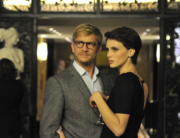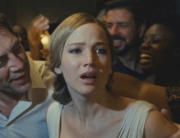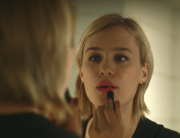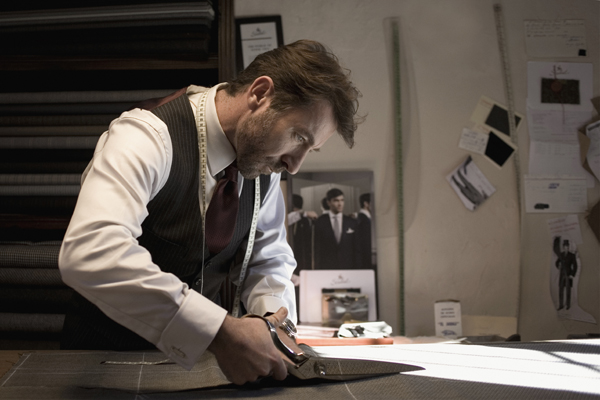The basic plot of The Woman in the Fifth sounds like a psychological thriller. American Tom Ricks (Ethan Hawke) relocates to Paris to be closer to his estranged wife and their six-year-old daughter, Chloe. When he realizes his wife won’t forgive him for past indiscretions or allow him time with Chloe (because of a restraining order), Tom finds himself isolated in the city, and getting entangled with a series of dangerous yet intriguing characters. However, his new environment, a seedy hotel, is useful to Tom; he is a writer working on his second novel and in need of some serious inspiration.
To pay for his room, Tom takes a job as a doorman for a crime syndicate. His sole task is to sit alone in a locked room and press a button to let in late-night visitors into an underground establishment. Tom’s life is further complicated after he meets the beguiling Margit (Kristen Scott Thomas), the woman referenced in the title, who resides in the Fifth Arrondissement. She takes him on as a lover and kind of a writing protégé. When strange things start happening to the people in Tom’s life, it becomes clear that Margit’s somehow involved.
Bespectacled Tom wanders through Paris, watching the world through his thick lenses, which gives him the appearance of having oversized eyes. Director Pawel Pawlikowski creates a dreary yet striking on-screen world that dips in and out of focus, as if the viewer’s eyesight is as blurry as Tom’s. He watches his daughter play outside her school from a distance, longing to be a part of her life again. He watches Margit, fascinated by her coolness. He watches the video screen that shows him who is approaching the building in which he works. Tom may be the protagonist, but he is just as curious as the viewer about the world he inhabits. However, his extreme passivity is frustrating. I often felt I was more eager to know what was going on than Tom was.
Hawke’s plays Tom as the most melancholy of novelists, and his performance blends into the bleak Parisian setting. His depressive state, though, is balanced by the young Polish waitress living in his hotel, Ania (Joanna Kulig), who brings light to a fairly grey world. It’s easy to see how she and other hotel residents could become sources of inspiration for his next novel. On the other hand, Kristin Scott Thomas spends most of the time in the background, appearing quite a ways into the film and remaining obscure to both Tom and the audience. She plays the femme fatale with a deviousness that is watered down by her vague purpose within the plot.
It was difficult for me to decide whether this film was intended as more a character piece or one of built-up suspense. While it begins with a troubled author who stumbles into mysterious circumstances, The Woman in the Fifth moves away from that theme. After consideration, this film is about the inability to solve the mystery behind closed doors; about how those wonders affect Tom and the audience alike. In some cases, this is literal, as with Tom’s job, where he is unable to discover exactly what disturbing deeds go on. Likewise, Margit’s true nature remains elusive. Perhaps most emotionally resonant is Tom’s yearning to be a part of Chloe’s life again.
For the audience, Tom’s past with his wife, remains vague. The film paces itself slowly, promising to reveal shocking truths, but then doesn’t quite deliver on those promises. Nevertheless, the lure of these mysteries was enough to keep me intrigued to the end, even if the result was not quite satisfying. Those looking for a spellbinding thriller, though, may be disappointed.
















Leave A Comment